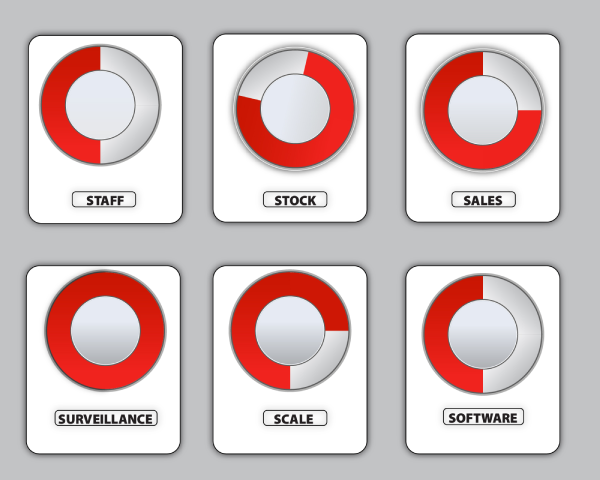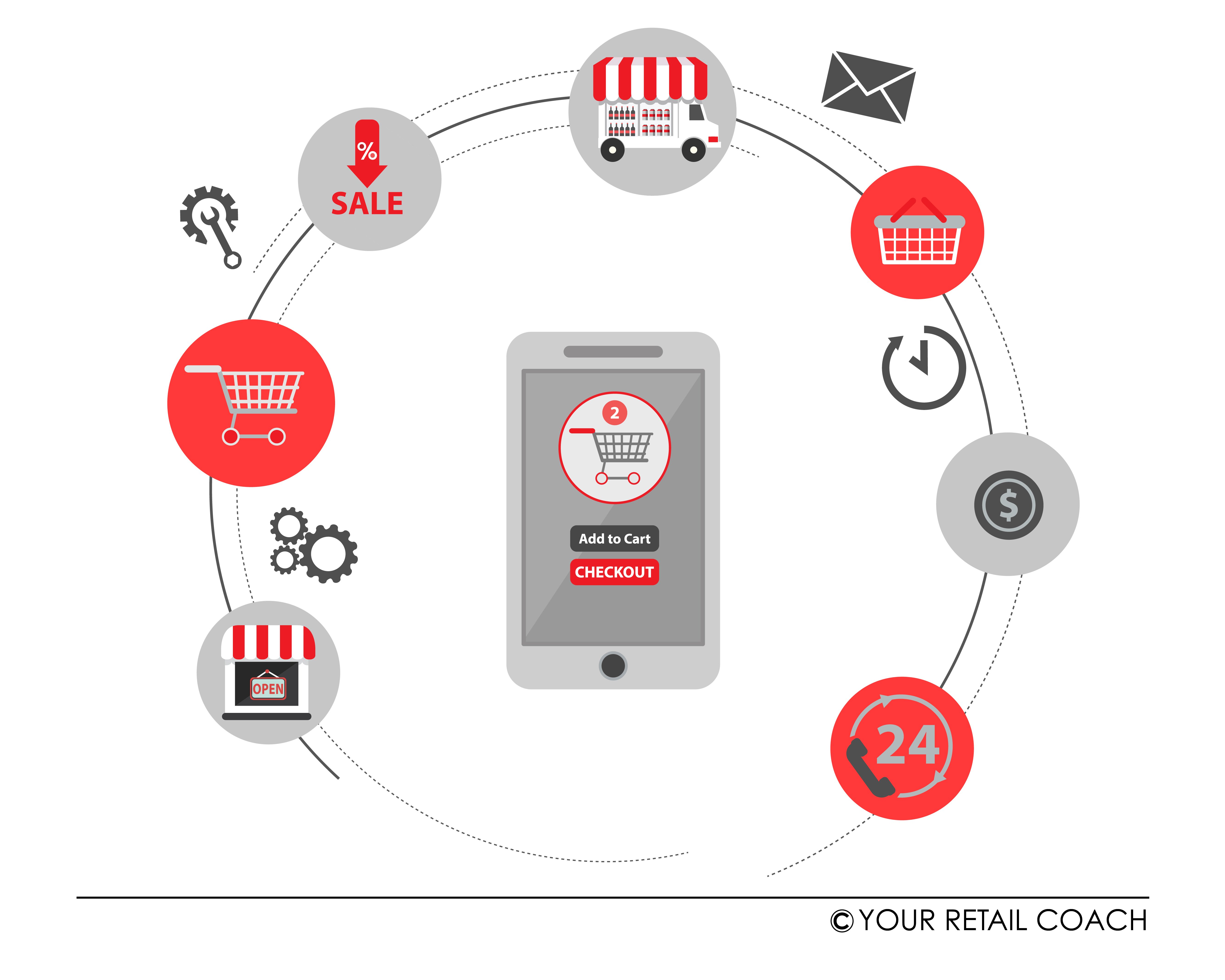As a retailer, imagine being able to offer a shopping platform to customers without visiting a store or website but by simply using a VR headset. Think of having selling options while customers play games on a console. What if we tell you that someday customers will be able to prepare a food item remotely and then get it home delivered? Such possibilities and innovations could hold a lot of surprises for retailers irrespective of the size and scale of their business. Remaining aware of these trends will help retailers carve the right phygital business solutions in a planned and organised manner. This blog examines more such interesting potential future trends in the world of phygital & omnichannel retailing.
Wider Inclusion of Local mom-and-pop Stores
Retail giants and mom-and-pop stores within industries have always been perceived as competitors at different levels. Phygital and omnichannel ways of delivering value propositions and related services have begun to change this now. Retail players at all levels now see a point in collaborating in the sourcing and distribution networks.
Big retail brands now see the advantage that small retailers have in the form of a strong local presence. The inclusion of mom-and-pop stores at the root levels has the potential to help the big retail players achieve market penetration and develop new markets. It can also save investments for the big players in establishing their own network of stores or physical presence. Brands that want to enter new markets can seek to achieve their promotional goals on shorter timelines.
On the other side, local stores will also have their share of benefits by working with big retail players. These stores will get to share the brand prowess of domestic and global retail brands. This has the potential to increase their sales and revenue. They can push private-label brands with higher margins. Big brands also come with better marketing support, professional business process solutions, and world-class technologies.
Emphasis on D2C
While using the extensive network of mom-and-pop stores is an option, many retail brands are also foraying into establishing their D2C distribution networks with the help of eCommerce or any other suitable strategy. D2C removes the reliance on traditional channels. Brands have better control over data, operational quality and customer experience. When working with external channel partners, businesses do not get a first-hand awareness of the opportunities and challenges. If they can work on them, they have the chance to carry out the value chains with more strategic and long-term benefits.
Selling via traditional channels also deprives retail brands of exercising control over customer experience. For example, FMCG brands have little knowledge or control over how their products are stored or sold at the grassroots level. By providing an omnichannel platform to customers, retailers can provide a better shopping experience to their customers.
With direct access to internal business data in the value chain, retailers have better chances of improving their operations. These data are also crucial to deepen the understanding of customer segments which in turn is useful for product/service improvisations.
By significantly reducing or eliminating the role of middlemen in the supply chain, retail brands can exercise greater flexibility in their pricing strategies.
Use of AR and VR
AR and VR are probably going to be the two biggest hardware-based disruptors in the world of phygital and omnichannel retailing. They are already here and their presence is extremely likely to intensify in the very near future. For instance, many fashion retailers are already using AR (some also on their storefronts) which helps customers in their purchasing decisions. A popular instance would be Ikea using an AR application to help customers virtually see how any particular furniture would look in their homes. These two are examples of product visualisation. Make-up products would also fit into this category.
Another application of AR and VR technologies is delivering customer support services. For example, instead of using chatbots and phone calls, customers can be delivered a more expressive, immersive, and engaging experience by using VR-based solutions. AR and VR are also highly useful in delivering high-quality customer support training programs to employees.
The use of AR and VR-based solutions by retail brands is not going to be something new. In the near future, these two technologies will be more common as AR and VR hardware becomes cheaper and achieves higher acceptance among all stakeholders. However, the speed at which AR and VR are gaining popularity is on the slower side.
Multiverse
Online marketplaces were also perceived as virtual markets. They still are but they have become so common that we may not even regard them as virtual. Something similar is likely to happen with the concept of metaverse. The technologies that are or are going to be used in metaverse applications may be ones we are already acquainted with (like AR, and VR) or may be new mediums or platforms that will emerge. But one thing is for sure the metaverse is going to impact the retail industry in more profound ways particularly steering the phygital and omnichannel ways of selling and shopping. The application of the metaverse concept is already visible in many sectors like fashion, furniture, grooming, and more. Many retail brands offer virtual shopping that allows customers to have more immersive and engaging shopping experiences.
Metaverse will open additional new marketing avenues for retailers. They can create virtual stores and touchpoints to attract new segments and provide rich and fulfilling experiences to their customers in their shopping journeys.
Right now, the metaverse is in its infancy. Only a few players have adopted it. For customers in general, metaverse-based exploration and shopping is still a far-fetched notion. But as the tools and technologies become more economical and the business environment is congenial for the concept of metaverse to proliferate, more retailers and more customers will enter the field with improvised solutions and services.
Drone Deliveries
Delivery is a critical part of order fulfilment processes. It concerns not just eCommerce players but all phygital or omnichannel retailers with delivery services. Drone delivery is the next big anticipated development in the global delivery industry. Drones are already used for many civil and commercial purposes like agriculture, construction, delivery of aid and support, etc. However, we are yet to see a widespread application of drone-based deliveries in retail and eCommerce. Once the bottlenecks are addressed, drone-based delivery solutions are imminent.
One of the biggest benefits of drone delivery is that it will reduce the delivery timelines for retailers. There will be less dependence on ground delivery teams which is likely to make deliveries more accurate. Having no need to deal with the menace of traffic is another plus. So early birds to adopt and implement this technology will have many distinct advantages. With more advanced drone delivery solutions, there may be no need for customers/residents to be physically present in their delivery locations.
The drone delivery solution also comes with certain challenges. Regulation is one of them. Presently, there are many safety and security concerns that must be properly addressed. The world will need success examples to follow. As a technology, drones for delivery purposes may need some time to mature. From a business perspective, the volume of business will be a major factor in justifying investments in drone-delivery solutions.
Changes in the Role of Brick-and-Mortar Stores
As many retail businesses are likely to pursue their growth and expansion plans in the future, entering new markets will be one of the strategies. In that pursuit, going phygital or omnichannel will be critical for them. This is where the local network of brick-and-mortar stores will become highly relevant to some retailers.
The local network of traditional stores is a big asset to retailers or retail brands that want to enter new markets. Many retail brands have used this network asset to deliver their goods and services. This has marked a change in the role of local brick-and-mortar stores in the distribution chain. In addition to their independent business, these local stores can also play as branches of big brands whose customers are the same. For example, a local furniture shop can tie up with a domestic or international furniture brand. The details can be worked out if the business model suits both parties. The local furniture store gets access to the branding of an international brand. It will help the former attract more customers and potentially increase their turnovers. Via store presence and digital applications, such big brands can maintain a phygital approach.
Another big advantage to retail brands working with local assets is the access to local market insights and expertise. For example, a successful retail brand in one region need not necessarily possess the cultural and behavioural awareness that plays a big role in the customer service of another region. This is especially true in culturally diverse countries.
Partnerships/Collaborations
By now, this must be apparent to online and offline retailers that it will become increasingly difficult to rely on any one single-channel strategy going into the future. Adopting the phygital or omnichannel route will soon become unavoidable. The real challenge for retailers is to bring home the expertise and infrastructure. One option is to manage them internally whether by building or outsourcing. The other is forging partnerships. Let us grab this with an example.
Think of dry-cleaning businesses. Traditionally, these businesses do not offer free pick-and-drop facilities; most of them still do not. They are good in their core services but an overwhelming majority of them are still practically offline. You may find their names and contact on search engine results but nothing beyond that. Even if they choose to go omnichannel (say with online order facilities), they are unlikely to possess the updated expertise to adopt and implement it. This is when partnerships or collaborative solutions come into the picture. Imagining an ideal circumstance, multiple businesses can come together, pool resources, and build and implement one common online platform for their customers. This will be more economical for them than each building their own platform. Customers will also benefit as a big gap in their service consumption journey will be covered.
Phygital and omnichannel ways of delivering value propositions and related services are establishing that retail giants and mom-and-pop stores within industries can work together. Big retail brands now see the advantage that small retailers have in the form of a strong local presence. The local network of traditional stores is also a big asset to retailers or retailing brands that want to enter new markets with omnichannel goals. On the other side, local stores also have their share of benefits when they associate with big players. While using the extensive network of mom-and-pop stores is an option, many retail brands are also foraying into establishing their D2C distribution networks with the help of eCommerce and other suitable strategies.
Partnerships or collaborations will play a crucial role at all levels for common solutions and mutual benefits.
As it has always been, technology will continue to pivot major disruptions in the retail and eCommerce industry concerning phygital and omnichannel ways of selling and shopping. Talking about technology, AR and VR are two big looming developments for these two industries. As far as widespread application is concerned, multiverse looks like a closer reality than drone-based delivery solutions.
FAQs
Phygital vs Omnichannel: What is the difference between omnichannel and phygital?
Phygital denotes the creation and/or integration of online and offline capabilities. Omnichannel focuses on the integration of all channels involved in the distribution and delivery of goods and services. When these two concepts are applied to retail and eCommerce, phygital becomes one of the ways to achieve omnichannel. For example, by providing customers with the flexibility to update the delivery instructions over the web/app, eCommerce brands seek to give an omnichannel experience to their customers. The phygital effect takes place here when a customer is able to change the delivery instructions over the web/app and the actual delivery activity is altered.
What is the future of omnichannel retailing? What is the future of phygital?
Phygital and omnichannel are already changing how goods and services are delivered to customers. Many global and domestic retail brands now realise the potential of working with traditional brick-and-mortar stores at the local levels. Also, the local network and expertise of local traditional retailers is also a big asset to retail and eCommerce brands that want to enter new markets with omnichannel goals. Such tie-ups are going to get more common in the near future.
Many retail brands that have traditionally relied on distributors at different levels have also started establishing their D2C distribution on the lines of eCommerce. If the trend picks up steam, it will impact the traditional roles played by distributors and retailers in the supply chains.
Partnerships or collaborations among retailers to solve common problems or for mutual benefits are not yet seen as a trend but they can emerge as a high-performing strategy as competition in retail and eCommerce gets more intermingled.
As we saw with eCommerce, technology will continue to remain the dominant source of all major disruptions in the retail and eCommerce industry. AR and VR are two imminent developments.
How to implement phygital in my business? How to achieve phygital transformation?
Phygital means the creation and integration of online and offline capabilities to achieve certain business objectives. So, it is imperative for businesses to first establish why they want to adopt phygital. The strategies will vary from business to business but here are some important considerations/activities while striving to achieve phygital transformation:
For online businesses:
- Establishing physical presence/control in the distribution and delivery chain (may not be applicable in the case of services)
- Carrying out physical marketing campaigns touching critical touchpoints in customer buying journey/need realisation points/need awareness points
- Facilitating communication mediums to further the buying journey (e.g. QR code to business website/app on business cards/promotional documents)
- Creating scope of showing/offering physical evidence for validation
- Capabilities to operate in both online and offline modes with all stakeholders as applicable
For offline businesses:
- Establishing digital/online presence as per strategic relevance (and maintaining it)
- Carrying out digital marketing activities
- Capabilities to receive, process, and manage online orders/queries/requests/changes etc.
- Capabilities to operate in both online and offline modes with all stakeholders as applicable
- Offer credible and reliable online payment solutions
Common
- Establish the business objectives for going phygital
- Prepare the financial and commercial assessments and projections for implementing phygital initiatives
- Develop SOPs for managing and carrying out business operations
- Incorporate business and omnichannel objectives into the SOPs
- Planning for IT and automation platform and solutions
- Integrate offline and online business processes
For enquiries on phygital retail solutions or to speak to one of our expert omnichannel consultants, please drop us a message and we will reach out to you.
Retail Healthometer
Check the health of your business? Are you ready to organize & scale ?












